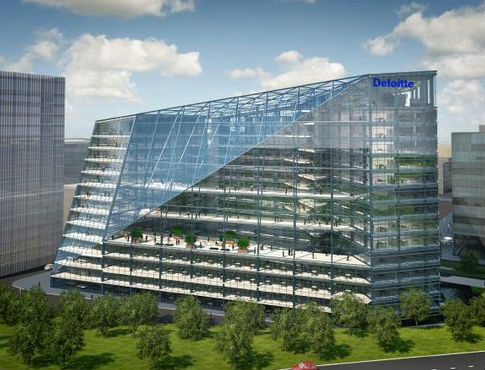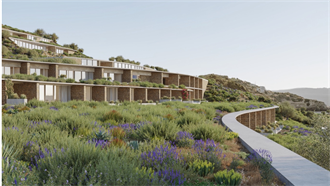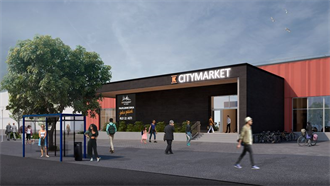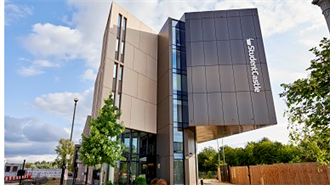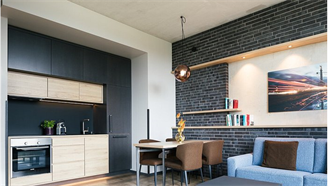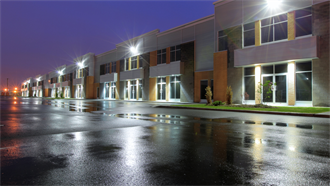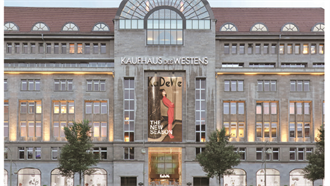Technological advances and innovation are set to radically change not only the way buildings are designed and constructed, but also the underlying business models used by the real estate industry, delegates heard during a panel discussion at the Provada fair in Amsterdam at end-May.
In a whirlwind presentation illustrating how technology and innovation are transforming sectors from healthcare to measuring pollution and airport security, Steve Lewis, keynote speaker and CEO of Living PlanIt, made the case for a smarter approach to buildings, city and community development.
To give an idea of the omnipresent nature of sensory devices and intelligent systems in the built environment, he said the average city has 20-30 billion electronic sensors, including smartphones, constantly collecting information.
Use of new construction materials and sensors to create smart buildings can have a big impact on property companies’ bottom-line financial results, he noted. ‘It can lead to a 20-25% drop in capex and up to a 30% decline in opex. At the same time, revenue streams can be up to 50% higher.’
Regeneration versus new-build
Lewis stressed that the regeneration of obsolete buildings and derelict urban areas was as important as creating smart new buildings. He cited the East End of London as a case in point: long an impoverished area with little economic activity, it received a massive boost from the redevelopment triggered by London’s hosting of the 2012 Olympic Games. In continental Europe, major urban regeneration schemes include Hafencity in Hamburg and the Plaine Saint Denis project in the Paris region.
Barbara Knoflach, global head of BNP Paribas Real Estate Investment Management and one of the panellists, pointed out that at an asset level, most gains in terms of sustainability and cost savings are to be made from retrofitting ‘old buildings’.
For new buildings, BNP Paribas RE takes what she described as a ‘VR’ (virtual reality) approach. ‘By that I mean that we lay out virtually what we plan to do and present that to the client, make adjustments based on their feedback before moving to the physical bricks and mortar stage.’ Around two-thirds of BNPPRE’s €24 bn real estate portfolio consist of existing buildings (more than 10 years old), versus one-third of new-builds.
Scratching the surface
‘When it comes to how technology and innovation are being harnessed by the real estate industry, we have only scratched the surface,’ said panellist Lisette van Doorn, CEO of the Urban Land Institute Europe.
She pointed to ULI’s ‘good density’ research programme, which explores the effects of densification in cities, as an initiative which embraces new technologies and innovation. With more than 50% of the world’s population currently living in cities and set to increase by another billion by 2030, the pressure on the existing urban infrastructure is mounting.
‘Good density’ is defined as cities that minimise energy consumption and environmental impact while fostering productivity and innovation and supporting livability, through better connectivity, amenities, open spaces, and social interaction.
Holistic approach
The panel agreed that real estate projects should be approached in ‘a more holistic way’ with better collaboration between the various stakeholders – urban planners, developers, investors, and municipal authorities. ‘There is a discrepancy between the planning process, which can be arduously slow, and the efficiencies and speed offered by new technologies,’ said Knoflach, noting that the two need to be more aligned.
Governments can also play a bigger role in facilitating urban redevelopment, by providing investment and land, the panel noted.
Meanwhile, real estate companies can lever new technology and innovation to build better business cases and subsequently make more informed decisions, said Van Doorn. Knoflach agreed, noting that underlying business models for different sectors are already shifting. ‘Look at offices, we used to look at long leases with a secure financial tenant but they are no longer there, you have to be far more flexible. In the retail sector, with the arrival of pop-up stores, fixed rents no longer apply so the concept of rents has to be redefined. As for logistics, the question is: are we looking at giant Amazon-style sheds or quick delivery warehouses close to towns?’
‘The real estate industry has to adapt,’ stressed Knoflach. ‘New technologies and innovation challenge us to think differently: is this the right opportunity at the right time in the right place?’
Pictured: The Edge office building in Amsterdam’s Zuidas business district developed by OVG. It was awarded the highest-ever sustainability rating by the Building Research Establishment (BRE) in 2015. The complex has 6,800 sensors which register everything that happens in the building.

